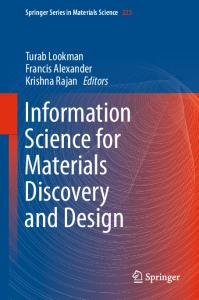High-performance computing for materials design to advance energy science
- PDF / 576,097 Bytes
- 6 Pages / 585 x 783 pts Page_size
- 113 Downloads / 357 Views
Introduction The future of modern society is tied to the availability of sustainable energy resources. While a global emphasis on conservation is certainly called for, there is a cultural imperative to create new ways to meet our energy needs (Please also see the April 2008 issue of MRS Bulletin.). Positive responses to this mandate, in turn, will hinge on associated advances in materials design. This is where high-performance computing (HPC) plays an ever more valuable role. HPC in the energy sciences brings together materials researchers from such disparate fields as biology, fusion, inorganic chemistry, and photophysics to advance the computational interrogation of material structures (Figure 1). The common technical ground lies in the computational algorithms and hardware used to explore, design, and evaluate new materials and materials processes. The resulting discipline-bridging interactions have the potential to synergize new visions for how we might address the energy needs of our global society. HPC relies on the development of algorithms that are parallelized (i.e., that can spread the computational workload out among a number of computer cores that are conducting calculations simultaneously) and that scale well. A code with perfect scalability, for instance, would run twice as fast on two cores than on one, and one thousand times faster on as many cores.
This is never the case in practice, but some types of algorithms, for instance those for which the overall task can be divided up into jobs that computer cores can work on with little communication, are much more scalable than others. Interestingly, most materials science papers involving HPC tend to dwell on the algorithms used rather than hardware when discussing their research. This does not imply that they have not spent significant time optimizing their code on a given computing platform. Rather, it reflects the fact that the codes are transferrable between HPC systems, while the hardware may be very dissimilar. As a result, efforts made to optimize a code on a particular computing platform may not be of sufficiently general interest to the materials science community to be discussed in literature outside of computational science journals. This is certainly the case in this issue of MRS Bulletin, which showcases the HPC research of a number of leaders in the materials design community. Although mention is made of compute time requirements and the number of computer cores employed, the emphasis is on issues that are not hardware specific.
High-performance computing and first-principles algorithms Perhaps correlating with research progress in the field, the role of algorithms associated with quantum mechanical calculations
Mark T. Lusk, Colorado School of Mines, Golden, Colorado 80401, USA; [email protected] Ann E. Mattsson, Sandia National Laboratories, Albuquerque, New Mexico 87185, USA; [email protected] DOI: 10.1557/mrs.2011.30
© 2011 Materials Research Society
MRS BULLETIN • VOLUME 36 • MARCH 2011 • www.mrs.org/bulletin
169
HIGH-PERFORMANCE COMP
Data Loading...











